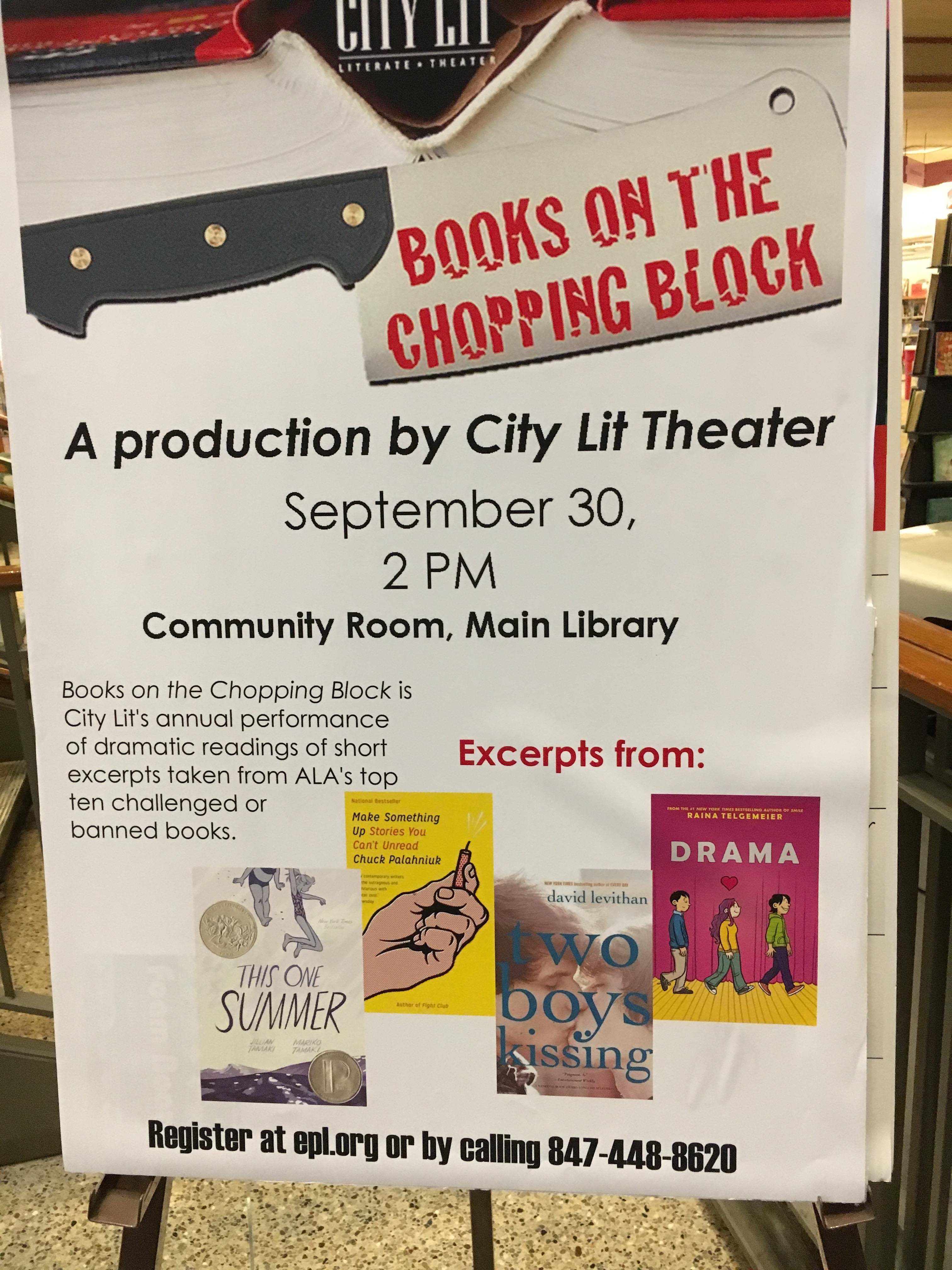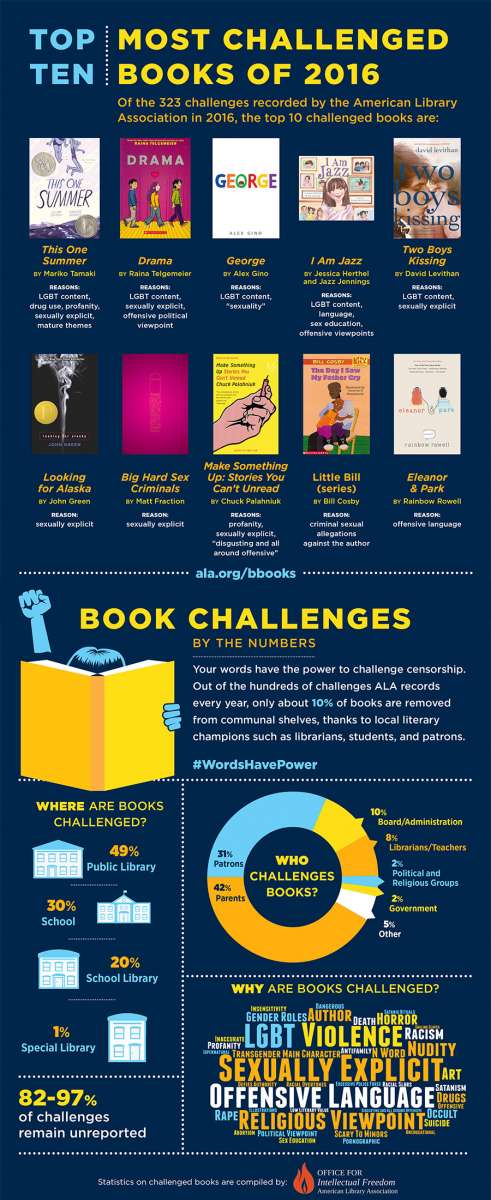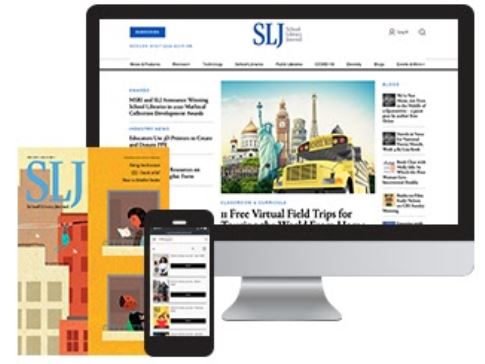How Bill Cosby Ruined a Perfectly Good Banned Books Week
 Tomorrow I’ll be posting the latest episode of my blog with my sister Fuse 8 n’ Kate. In it, we’ll be reading a picture book challenged relatively recently somewhere in the continental U.S. To find such a book I consulted the American Library Association’s listings of Frequently Challenged Books. As I scrolled through the lists by year I was struck by a change in the challenges.
Tomorrow I’ll be posting the latest episode of my blog with my sister Fuse 8 n’ Kate. In it, we’ll be reading a picture book challenged relatively recently somewhere in the continental U.S. To find such a book I consulted the American Library Association’s listings of Frequently Challenged Books. As I scrolled through the lists by year I was struck by a change in the challenges.
But first, a word about Banned Books Week. It only comes but once a year while challenges to the books on our shelves happen constantly. As many of us know, most complaints do not become formal right away. Libraries are charged with providing all books for all readers. For any one reader to say they know what is best for their fellow readers is inherently problematic. When I worked for New York Public Library I was only made aware of about 2-3 challenges to books for youth. Generally, the patrons wouldn’t ask to remove the book from the shelves but instead to move it to the YA or adult section of the library. Other libraries in this country aren’t so lucky, particularly those in schools. As such, I should note right here and right now that I have only ever worked in libraries in politically liberal districts. The issue that I’m bringing up today is informed by this perspective, so take what I say with a grain of salt. I have never created a Banned Books Week display in a community that might take that display and consider banning materials from it.
Now it is standard practice for a library to do a big Banned Books Week display of some sort (note: librarians have also been known to wear Banned Books bracelets, earrings, necklaces, shirts, etc.). It’s simple. You buy some yellow police tape, make a pile of books, and then just wrap the whole thing up. Patrons love it when you use the word “forbidden”. And I don’t want to brag (<– lie) but my library also had a killer idea for a program to host along with Banned Books Week, seen here:
So here I am paging through the Frequently Challenged Books list when I noticed something new. Something I don’t remember encountering before.
Let’s do a visual example of this. This is from ALA’s Office of Intellectual Freedom. A very cool poster/banner of the 2016 challenged titles.
If you read the title of my blog post today you see the problem. For the first time, Bill Cosby’s “Little Bill” series is being challenged in libraries, not because of the content, but because of the criminal sexual allegations against the author. Similarly, reading through the Frequently Challenged List I found these two recent challenges:
- 2014 – If I Ran the Zoo by Dr. Seuss is challenged in Vancouver for its “racial stereotypes of Asians”. No mention is made of the racial stereotypes of Africans and people from the Middle East.
- 2015 – Tintin in America by Herge is challenged in Winnipeg for its “stereotypical and racist depictions of indigenous peoples.” [Tintin in the Congo was also challenged in 2012]
It think it’s fair to say we won’t be seeing any of these books on a bracelet in the near future. This implies that to some degree some books are okay to promote during Banned Books Week while others would prove far more difficult to defend if you placed them under a large banner that read, “Celebrate Freedom. Read a Banned Book.”
I’m acting like this is a new development, but any librarian worth their salt would be quick to tell you that books being challenged for racism, sexism, homophobia, etc. aren’t a recent phenomenon. As one example, The Adventures of Huckleberry Finn has been challenged repeatedly for its use of the n-word over the years. I’ll absolutely grant that, but I do feel like the Bill Cosby book series in particular is different. As a colleague pointed out to me the other day, it’s not as if we’re swimming in easy readers and early chapter books starring young African-American boy protagonists. And like the cases of Woody Allen and Roman Polanski you have to consider the art apart from the creator, and are you able to really do that? How many parents would willingly pick up a book written for children by Mr. Cosby at this point in time? Does that mean he should be removed from the library entirely? Or is this a case where a librarian need only wait until the book is “dead” (hasn’t circulated in 2+ years) and then weeding will do the job on its own?
My point today isn’t that we shouldn’t promote Banned Books Week. It’s that promoting challenged books can prove complicated if we take into account all the books appearing on the challenged lists. I think that, generally speaking, librarians and booksellers pick the books to promote that will be of the most interest to their communities. They’ve always done that and they’ll continue doing it in the future. And as long as we understand that not all challenged books are titles we want to wear proudly on our chests, and that it’s an issue that has a lot of gray areas, I think we’ll be doing fine.
RELATED
The job outlook in 2030: Librarians will be in demand
The job outlook in 2030: Librarians will be in demand
ALREADY A SUBSCRIBER? LOG IN
We are currently offering this content for free. Sign up now to activate your personal profile, where you can save articles for future viewing









Add Comment :-
Be the first reader to comment.
Comment Policy:
Comment should not be empty !!!